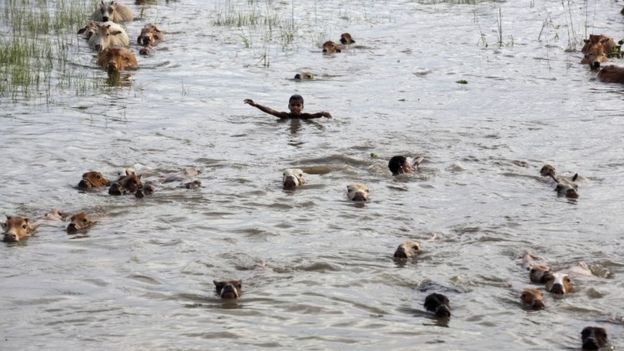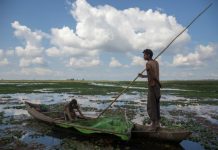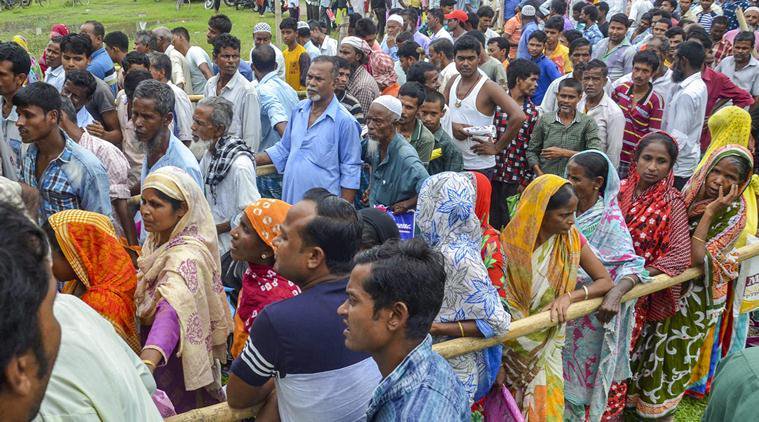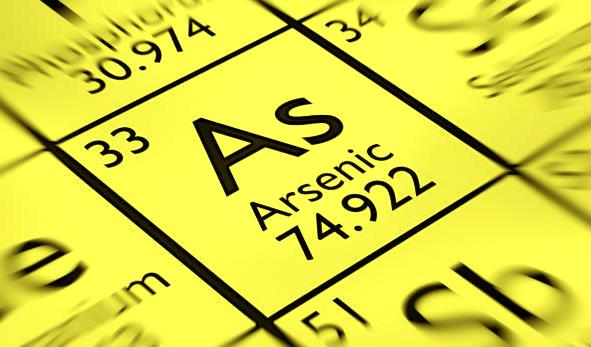Floods are a perennial concern in many regions of South Asia and flood relief an annual news- amidst this context what can be the solution towards developing a mechanism that not only mellows down the damaging effects of the flood but also takes into account community participation and partnership? The piece that follows looks at this theme and offers solutions to the concern.
Arjun Patel is a Teacher and Environment Specialist – based in Kanpur.
Many studies across the world have successfully shown how the distance from embankments has impacted the chances of floods for a particular region. And it is this connection between embankment distance and the possibility of floods that this crisp piece seeks to look at. This because all the more relevant at a time when the news of floods and heart drenching visuals of pain and despair from various parts of India in particular and South Asia in particular are reminding us of the great havoc and disaster that nature is capable of rendering upon us.

A study of over 100 villages in the Ganga-Brahmaputra floodplains was conducted to find out the possible linkage between embankment distance and flooding possibilities. The research has found that villages in these areas are exposed to diverse water associated calamities depending on their location in the context of the embankment. Those areas which are located close inside the embankment are vulnerable to floods and riverbank erosion, and those outside, in the “safe” areas, are prone to extended periods of inundation.
This is likely to happen when the construction of an embankment causes the drainage lines to get blocked, the regulators in the embankments become dysfunctional, or when there is a back-flow of the larger river in spate. The who are inhabiting these so called “safe” areas suffer from a perpetual anxiety and fear of embankment breach, which is not entirely an irrational concern.
In Bihar in 2008, there was a grand issue that lead to the embankment breach in the Kosi river basin. Not very uncommonly this year too in some parts of Assam, Bihar and West Bengal breaches have caused flooding. Only in a few cases have come to light that have newly constructed embankments and that have been able to protect villages located outside them from floods. Despite this, in several of the flood-prone areas which have no embankments, people still very much articulates the need for embankments to be constructed.
Until now these embankments have been managed and looked after by either the irrigation or flood-control departments. However, what must be acknowledged is that the communities near the embankments are best positioned to take care of them as they are the ones who have seen and negotiated with it closely. The responsibility of embankment management could be given to the community, while the ownership right resides with the state. But what must be noted here is that this task of decentralisation and giving communities a bigger role in embankment management will not be easy one especially at a time and milieu when society is fractured along the lines of caste, class, and religion. We must remember the irony that is is practiced in human society and realise that despite one’s social, cultural and religious affiliations disaster is non-discriminatory and affects all. It is then legitimate that people across community should have the collective ownership of not just embankments but of many shared resources. It is they who know the best and deal the best.
To build the collective action from the community and to help it become self-reliant it is important that the state helps build an enabling institutional environment. The community-based organisations (embankment management committees) should be helped to get empowered so as to earn revenue from the embankments through tolls (as most embankments are also used as roads), and undertaking activities like plantation to help meet their needs. In areas where villages exist both inside and outside the embankment, their interests can often be in conflict. In such cases, efforts could be made to ensure that the former has a greater share of the revenue than the later and thus some sort of a just system is achieved. This will dissuade them from causing a breach of rules or taking up actions that may be contrary to the collective welfare. While what is suggested here is that the irrigation or flood-control departments might issue tenders for periodic maintenance related actions, it will be the committees which could act as a partner to partly implement the same, or act as a monitoring bodies to see to it that all the work goes on without being hampered in any manner. Payment to contractors could be made dependent on the joint approval inspection by the irrigation department and the embankment management committees to ensure that no pitfalls or improper work gets unnoticed or remains ignored.
Promoting the culture of decentralised management systems is yet to be tested for embankment management. But if the past teaches us something and we are prepared to take seriously the lessons that it has left behind then what we must immediately acknowledge is that we cannot merely decide to construct and then completely forget about embankments. If we as a collective realise that we have had enough of reactive flood protection and to avoid immeasurable disaster each year wish for a system of flood governance then what we must do immediately and with structural design is to deliberate upon ways of embankment management in areas that are flood-prone. Participatory embankment is an ideal way to look for solutions that are sustainable, egalitarian and community centric- if taken and implemented seriously this could offer the best solution to our flood related crisis once and for all.














